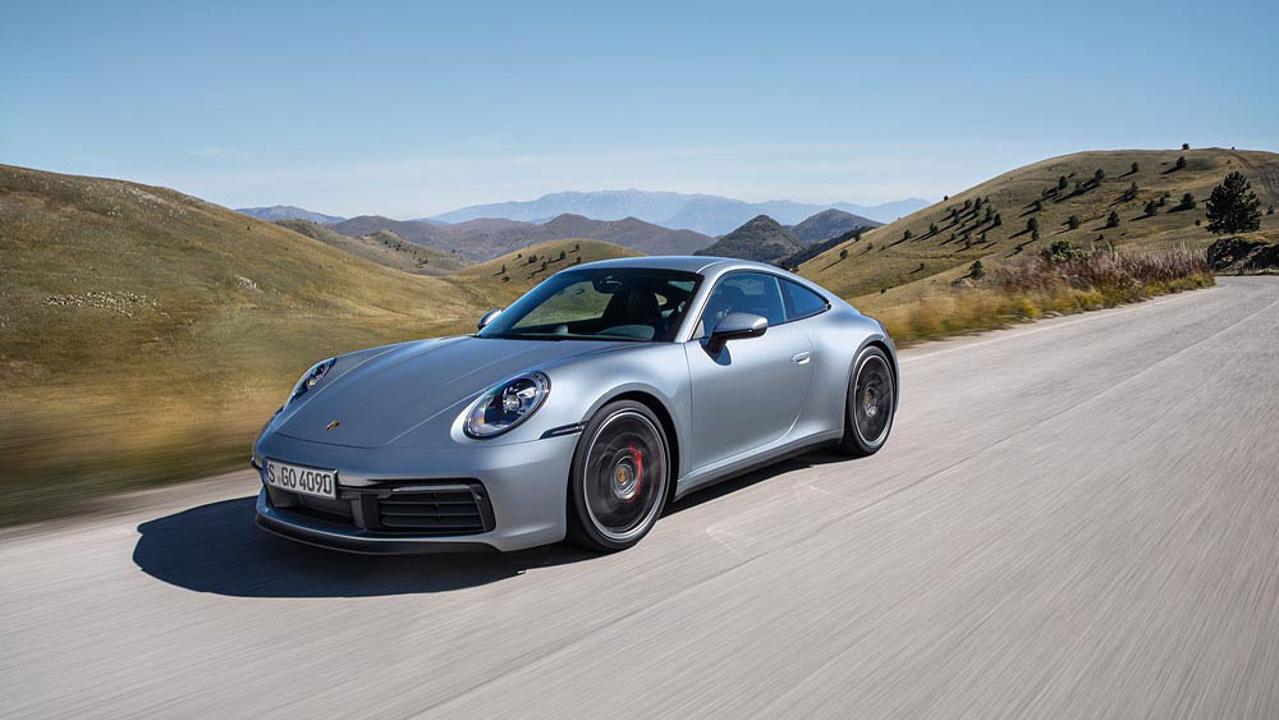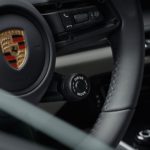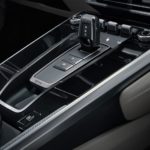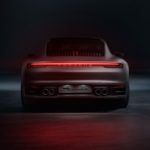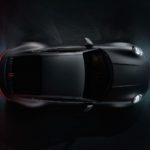- The 2020 Porsche 911 represents the 8th generation of the automaker’s iconic nameplate.
- It’s wider and more aggressive looking with a new version of Porsche’s flat-six engine.
- Expect a multitude of driver assist systems when the new 911 hits the market next year.
The 2020 Porsche 911 just rolled out at the L.A. auto show, and it further cements and further dilutes what the quintessential Porsche is. It’s bigger, heavier, more complex; it cranks out more power and gives you more performance. That Porsche can keep doing this, despite ever rising levels of weight and complexity, is an engineering miracle.
However, they have to do it this way is a disaster.
Simple & Effective
The 911 started out as a brilliant response to a simple question: “How can we make the 356 better?” The 356, for all its fun and capability was, at its heart, a hot-rodded VW Beetle in better clothing. The first 911, for all its flaws (they had to weld pig iron to the front bumpers, the chassis tuning was so far off) answered that question in so comprehensive a manner that the 911 “worked” for decades.
Then, right about 1998, Porsche realized you can only push air and oil cooling so far, and the 911 changed. Then changed some more. And it changed even more from there.
Related: Enthusiasts will appreciate this book, which chronicles the history of Porsche.
This leads us to this, the 2020 Porsche 911; bigger, longer, wider, heavier, bloated and, thanks to the dedicated application of Engineering, the “best” 911 ever. The 2020 911 is loaded with everything the modern “sports” car shopper demands (and Porsche shamelessly kowtows to). And yet, it still delivers sparkling performance.
What do we get for 2020 (besides that smug satisfaction)? Lots of everything!
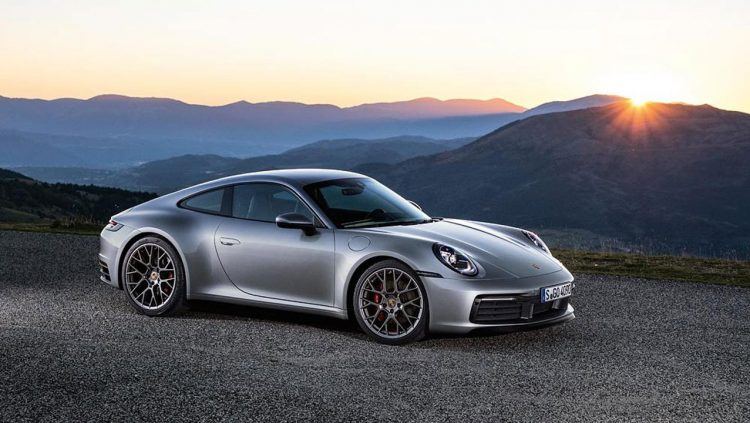
Styling & Design: Some History, Some Necessity
The new body design is bigger all around, with wider fenders over staggered wheels (20-inch at the front and 21-inch at the back). The flared fenders of the sportier 911s are now seen on all models. New LED headlights flow into the fenders and aim for that round shape of the original 911. The door handles are now flush and the outside mirrors are meant to reduce wind noise.
The rear has that same “light bar” as found across the Porsche range.
Of course, there’s a big honking spoiler that’s appreciably wider with variable positions. Best of all, apart from the front and rear fasciae, the entire outer skin of the car is now made of aluminum. A nice, classic touch but also an engineering necessity because 911s are getting fat.
Related: The 2019 Porsche 911 GT3 RS sounds like something NASA would build.
Interior Treatments: The Wild West
The interior has undergone a thorough redesign, but still manages to be an ergonomic nightmare. I can only chalk this up to “tradition” and the fact that Porsche people actually like when button placement and such comes across as a total afterthought. The tach is still front and center (thank you) but now we have the Porsche Communication Management (PCM) system front and center in the middle console.
The seats are a complete redesign, with significantly improved lateral support at the shoulder.
However, Porsche really trumpets the new assistance systems, said to increase safety and comfort.
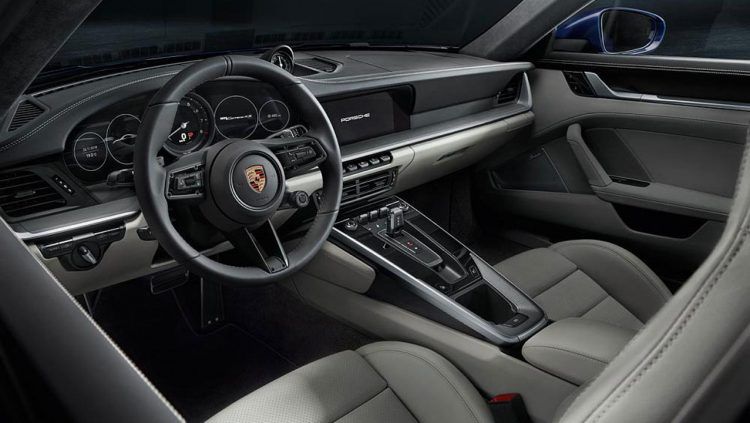
Assistance Systems: Tech Nannies & Babysitters
Those of us that are cynical enough to say it will mention that, yeah, you’re going to need all the “assistance systems” you can find to overcome the physics of having all that weight waaaay back there. Porsche now how the “Wet Mode” as standard equipment for the 2020 Porsche 911. Wet Mode detects water on the road, preconditions the stability control and anti-lock brake systems accordingly, and warns the driver.
You can call up vehicle settings particularly suited for wet roads via a button, or by means of the mode switch on the steering wheel. You know, so that way you don’t spin your brand new 911 off into the weeds like overconfident 911 owners since time immemorial.
There’s also a camera-based warning and brake assist system, standard, and Night Vision Assist with a thermal imaging camera. The Adaptive Cruise Control comes with automatic distance control, stop-and-go functionality, and an Emergency Assist function.
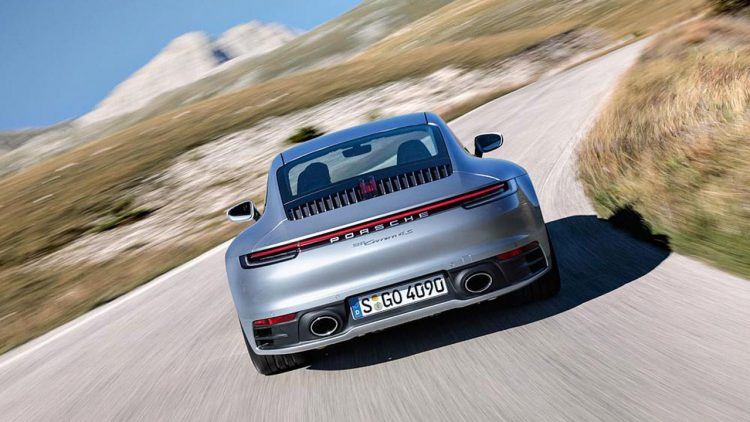
Power & Performance: No Worries Here
Yes, yes, I hear you shriek: what about the engine? Here, we have no worries or concerns. The next gen turbocharged flat-six engine has a primary focus on performance. New, larger turbochargers with electrically-controlled wastegate valves, a completely redesigned charge air intercooler, and piezo fuel injectors all help this 911 engine be the best engine it can be.
Everything is better with the 2020 Porsche 911: responsiveness, power, torque characteristics, the whole enchilada. Bottom line: 443 horsepower at 6,500 rpm (23 horsepower more than the previous model), 390 lb-ft. of torque (22 lb-ft. up from the previous model), and a comfortably-wide powerband from 2,300 to 5,000 rpm.
Meaning you should be able to work this thing all day and night.
Pricing & Availability
The 2020 Porsche 911 Carrera S starts at $113,200, which is not unreasonable. You can order yours now but the new 911 should be in U.S. dealers by this summer.
Tony Borroz has spent his entire life racing antique and sports cars. He is the author of Bricks & Bones: The Endearing Legacy and Nitty-Gritty Phenomenon of The Indy 500, available in paperback or Kindle format. Follow his work on Twitter: @TonyBorroz.
2020 Porsche 911 Gallery
Photos & Source: Porsche Cars North America, Inc.

